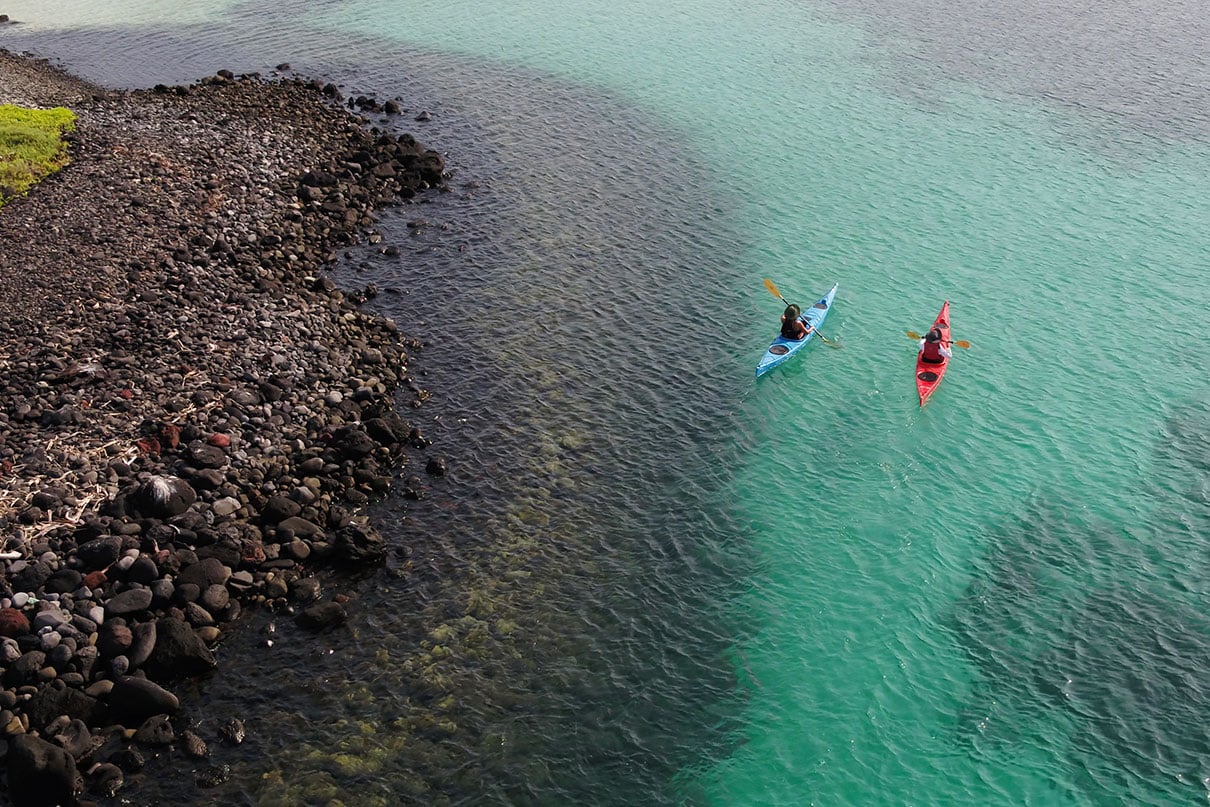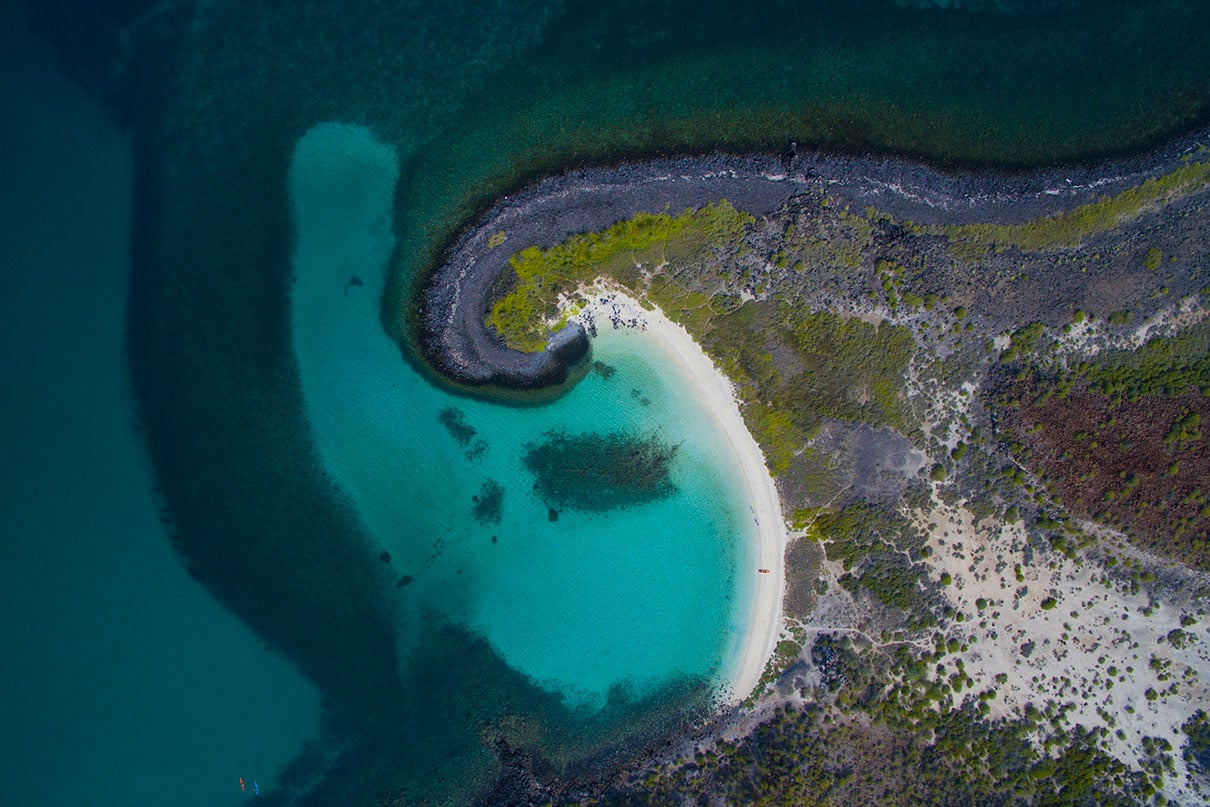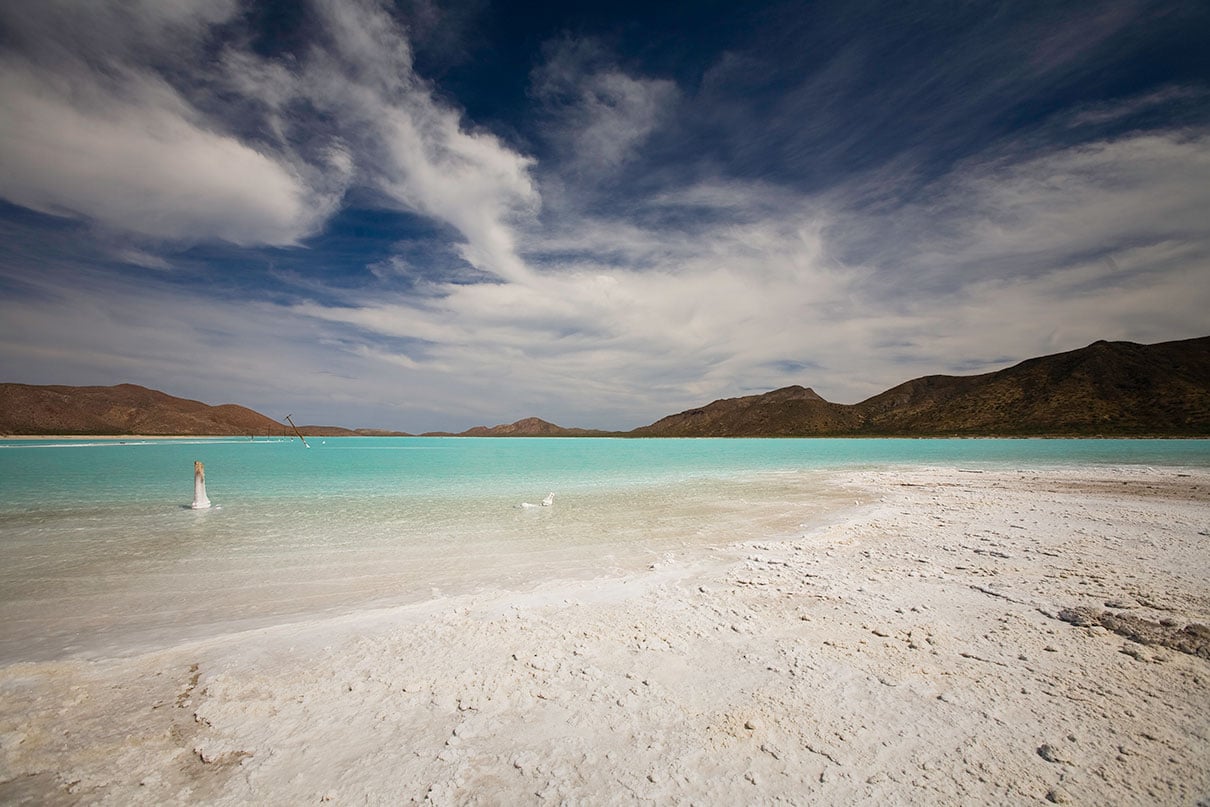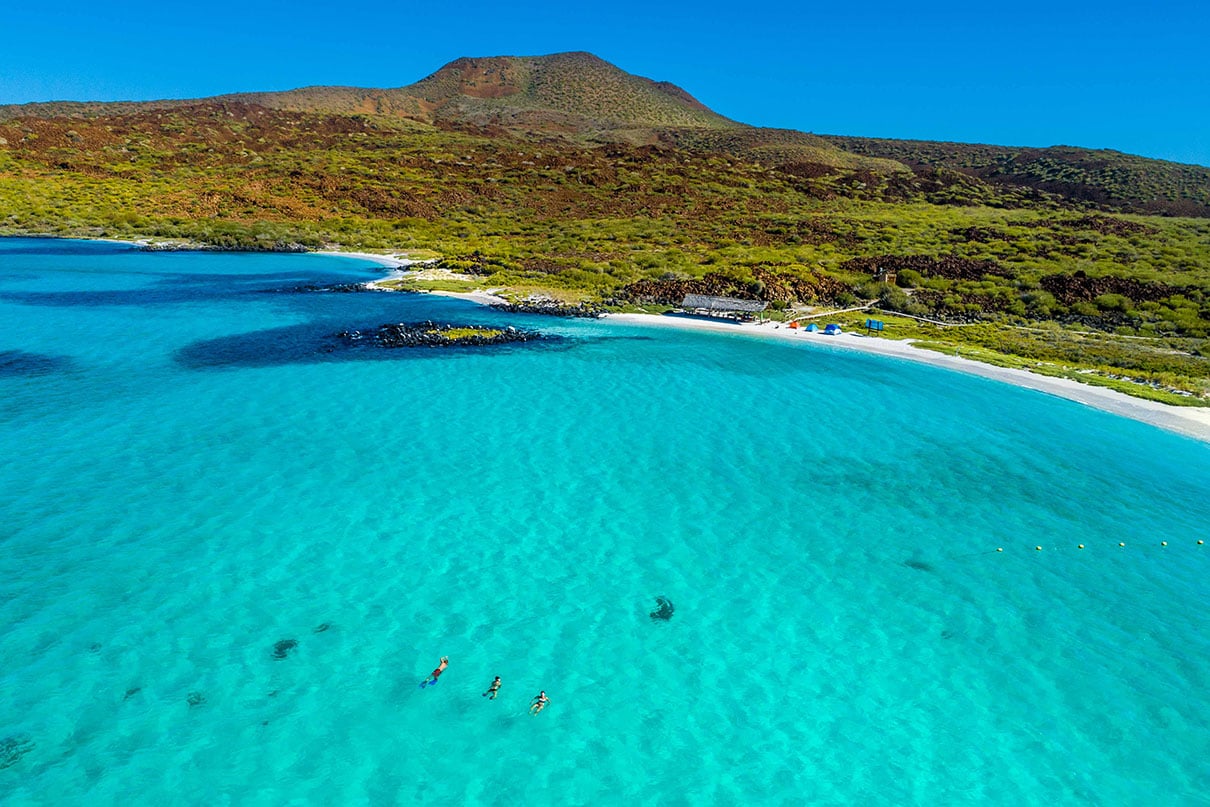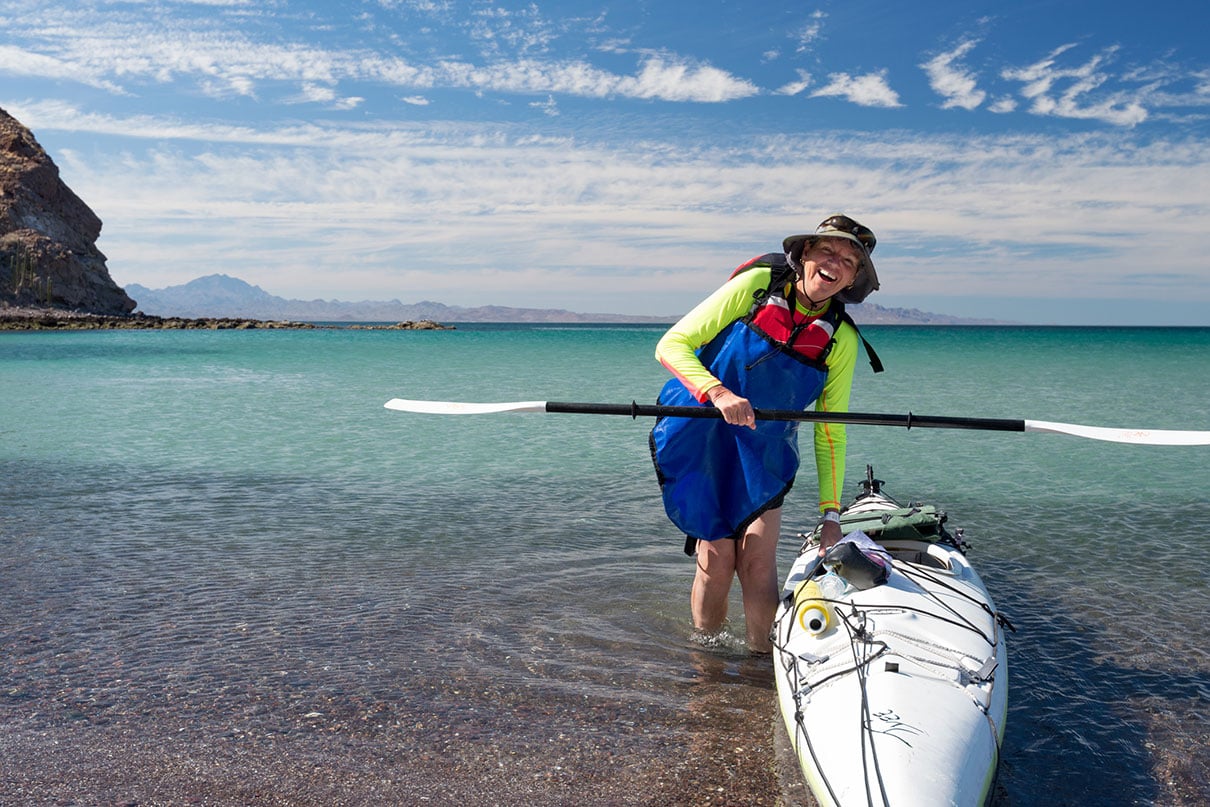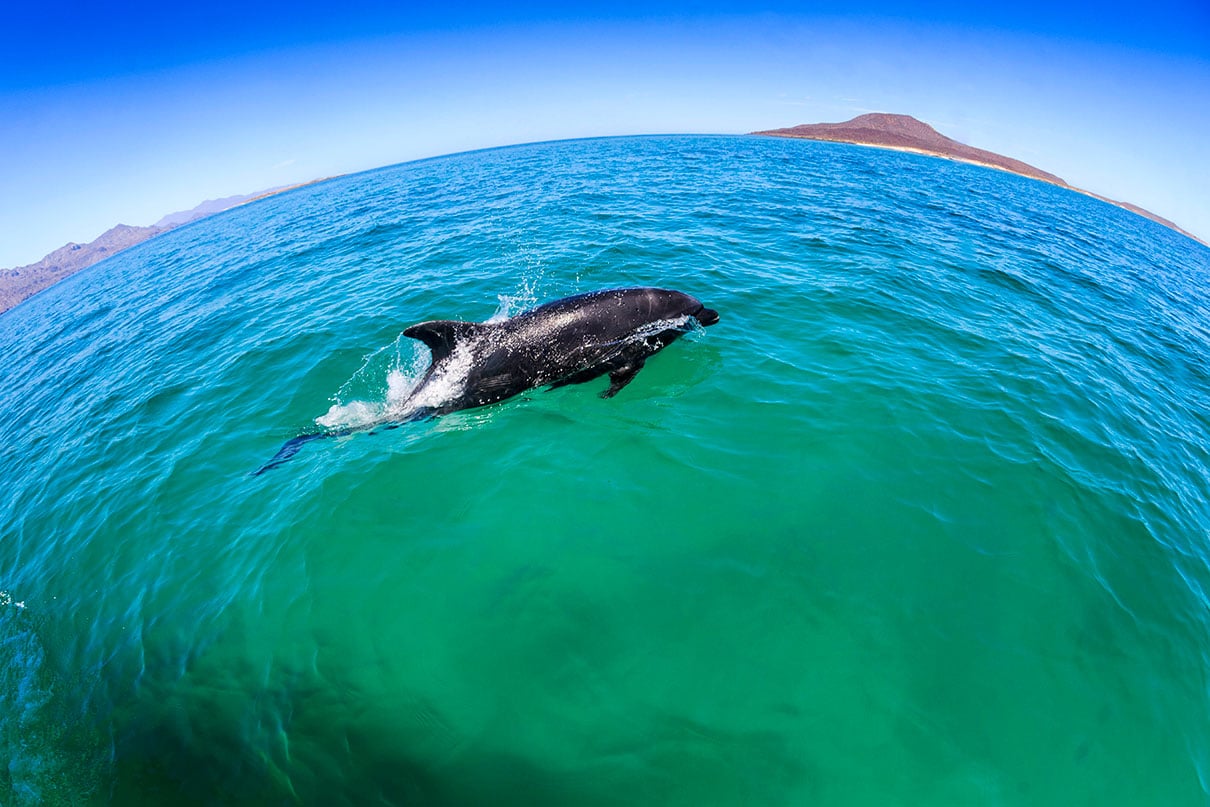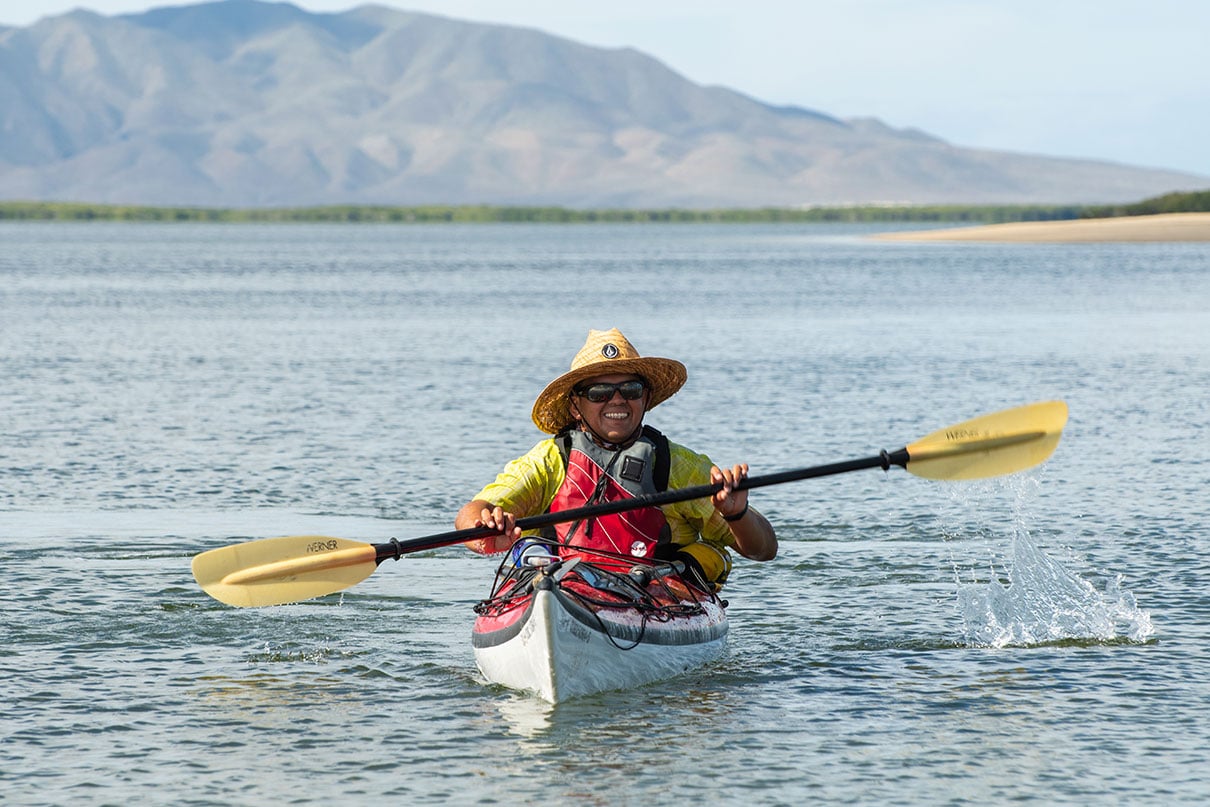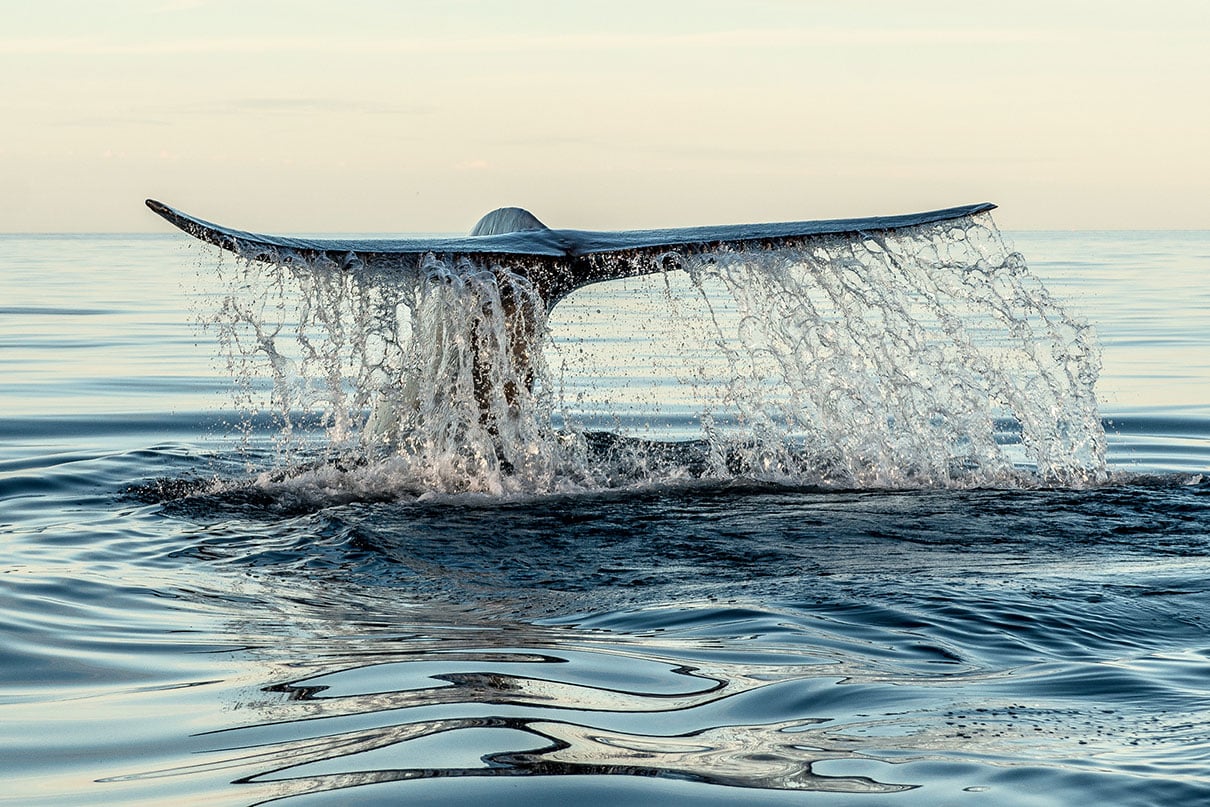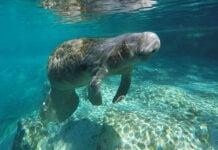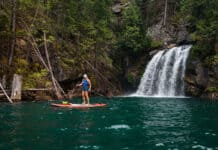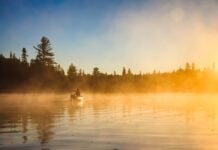Peter Grubb was kayaking between two islands in Loreto Bay National Marine Park—a protected area off the coast of Mexico—when he saw the first clue his group wasn’t alone. Ahead, a whale’s spout erupted above the water’s surface.
But he was still in for a shock when he glanced back to check on his niece in the kayak behind him. Just then, a massive blue whale surfaced between the two kayaks, its dorsal fin just the tip of the iceberg for the full 80-foot giant under the water.
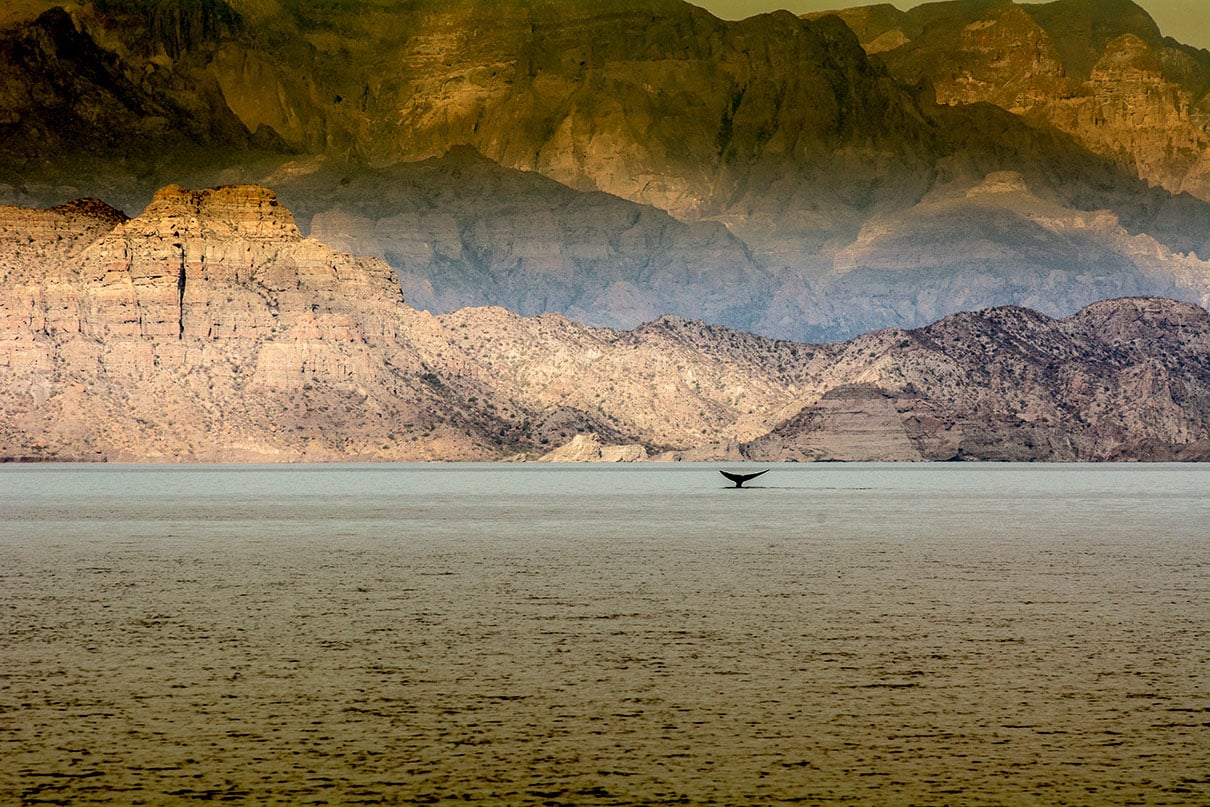
“It literally takes your breath away when a whale comes up, because they are just so big,” says Grubb, who is the owner of Sea Kayak Adventures, which operates guided kayaking tours in the region. “We’ve had some amazing whale encounters.”
Offering both incredible whale watching and prime paddling conditions, Mexico’s Baja California peninsula is one of North America’s best kayaking destinations. However, even with the convergence of these conditions, seeing whales is an exceptional occurrence, especially from a human-powered vessel. Many of the prime marine habitats off the coast of the Baja California peninsula are also protected with restrictive access for the safety of both whales and visitors. This is a reason why outfitters in Baja California Sur often recommend combining multi-day kayaking trips with an additional motorized boat cruise to specific whale viewing destinations to maximize your chances.
Regardless of whether you’re interested in booking a guided kayak trip with a local tour operator or interested in getting out on the waters on your own, here’s what you need to know about viewing whales in Baja California Sur.
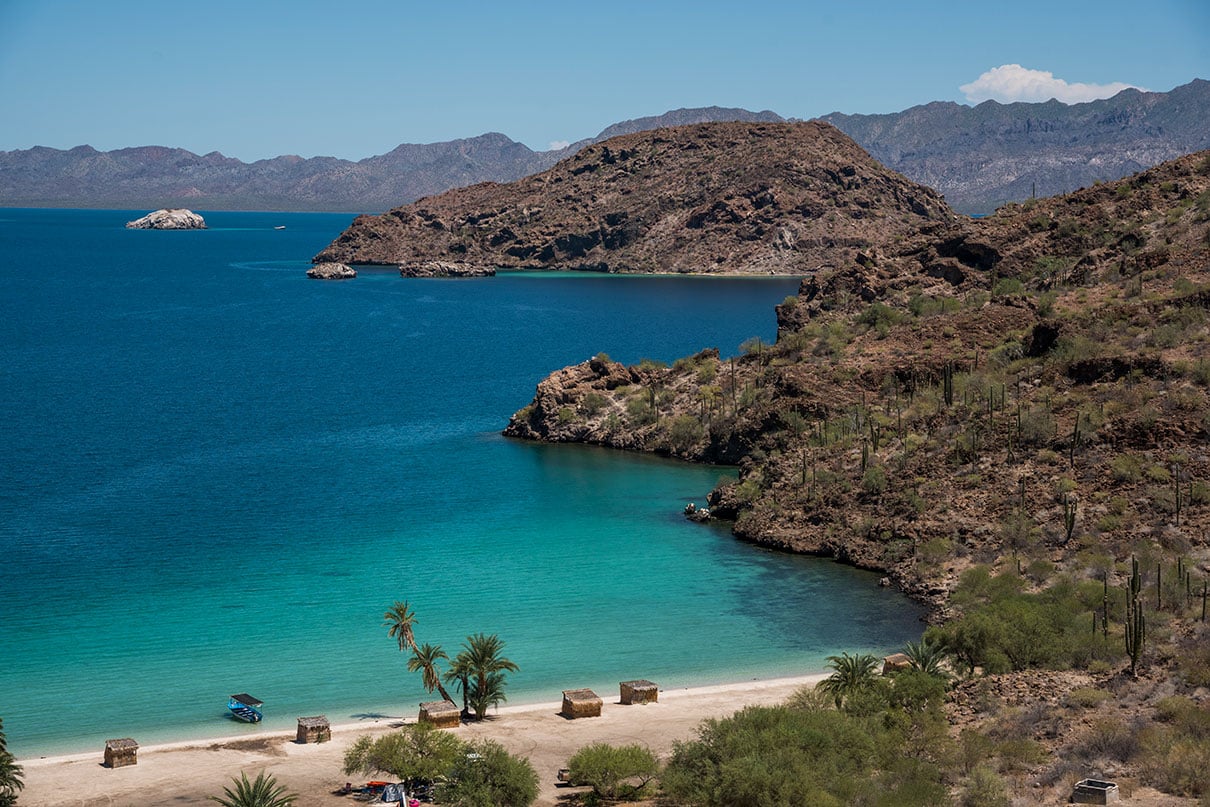
A paddlers’ guide to whale watching in Baja California Sur
Why whales migrate to the Baja California peninsula
The Baja California peninsula in western Mexico extends into the Gulf Of California. It is a paddler’s paradise, with 2,038 miles of contrasting coastline to explore.
On its east side, the Gulf of California has crystal clear waters with incredibly rich biodiversity, boasting abundant wildlife all year round. It’s only enhanced by its dozens of islands (including the popular Isla Espiritu Santos, Isla San Jose and the islands of Loreto National Park), with white-sand beaches that make for ideal kayak camping.
On the peninsula’s west side, the Pacific Ocean is more exposed to wind and weather but offers up sheltered deep-water harbors and its own offshore islands.
It’s not just the environments that differ—it’s also the creatures that live here, with both sides being home to different species of whales. Fortunately, the peninsula’s narrow size means it’s possible to visit the Gulf of California and the Pacific Ocean on the same trip.
A chance encounter with humpback, minke and blue whales in the Gulf of California
After spending their summers feeding in cooler, nutrient-rich waters, hundreds of humpback and blue whales migrate to the warm waters of the Gulf Of California at the start of every year to breed and give birth.
Blue whales, the world’s largest animal, are frequently seen in the waters off Loreto (which is where Grubb was paddling when he had his up-close encounter). For humpbacks, Cabo San Lucas and the wider region of Los Cabos at the peninsula’s southernmost tip is the place to go. Minke whales, fin whales, and orcas may also be sighted along the eastern side of the Baja California peninsula.
If you are organizing your own unguided trip within the Gulf of California, it is important to consider the peninsula’s cherished ecological zones, such as Loreto Bay National Marine Park and Isla Espíritu Santo can require permits for various activities, including kayaking and camping.
You may be lucky enough to see whales on a guided or independent kayaking excursion, but as Grubb says, it’s usually “serendipitous.” Instead, for a greater chance of encounters, book a tour by motorized boat.
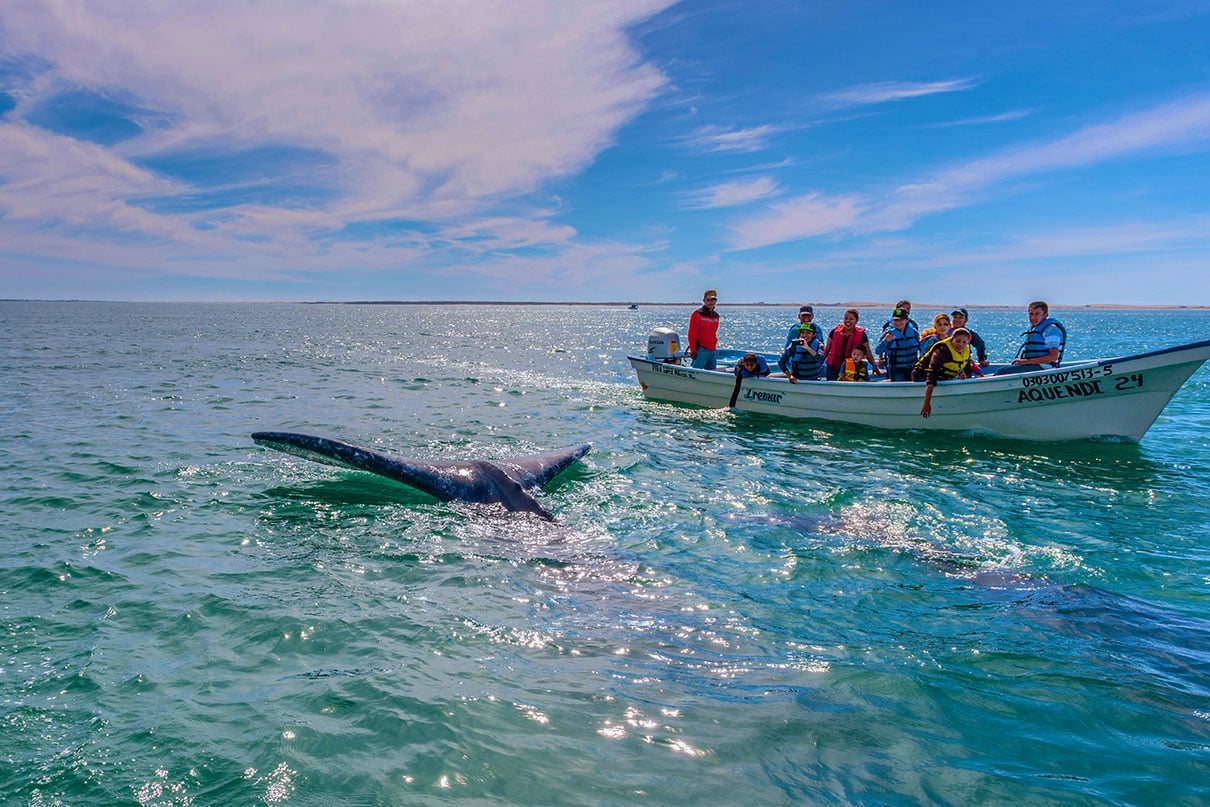
Witness gray whales by motorized boat in the Pacific Ocean
It’s the peninsula’s western side that attracts the eastern Pacific population of gray whales. These giants travel nearly 12,000 miles round-trip—one of the longest migrations of any mammal on earth—from their summer feeding grounds in the Arctic to the warm lagoons of the Baja California peninsula to breed and give birth.
These breeding grounds are protected, so paddling isn’t permitted. Instead, visitors travel with an authorized tour operator into the waters of Laguna San Ignacio, Laguna Ojo de Liebre or Bahía Magdalena. The experience is just as intimate as if it were taken via kayak, though, with as few as six people on a small 20-foot skiff—and with whales that are eager to interact.
“They’re known as ‘friendlies,’” says Grubb whose company operates a whale-watching camp in Magdalena Bay, which can be combined with a sea kayaking trip in the Gulf Of California.
Grubb explains that the mothers will push their calves up beside the boats, where passengers can reach out and touch them.
“If you don’t interact with them, they’ll go find another boat,” he says. “You can stick your hands in their mouths and smell their horrible breath,” he says. “You may not be in a kayak, but it’s a really amazing and powerful experience.”
Whale watching season for Baja California Sur
If kayaking is your primary objective, time your visit for the dry season, between the months of December and April, which offers up clear skies, sunny days and moderate temperatures.
Fortunately, this time of year also coincides with the arrival of whales, which are best sighted from late January until mid-March. It’s not only about the massive mammals, though. In addition to orcas and gray, humpback, minke and blue whales, there are also other massive marine animals on display. During the winter, whale sharks are present in the waters off Laz Paz (found on the peninsula’s southeastern coast) and thousands of Mobula rays congregate in the Gulf Of California’s waters. These species are the main attractions, but you may also spot dolphins, sea lions, elephant seals, and hundreds of species of fish.
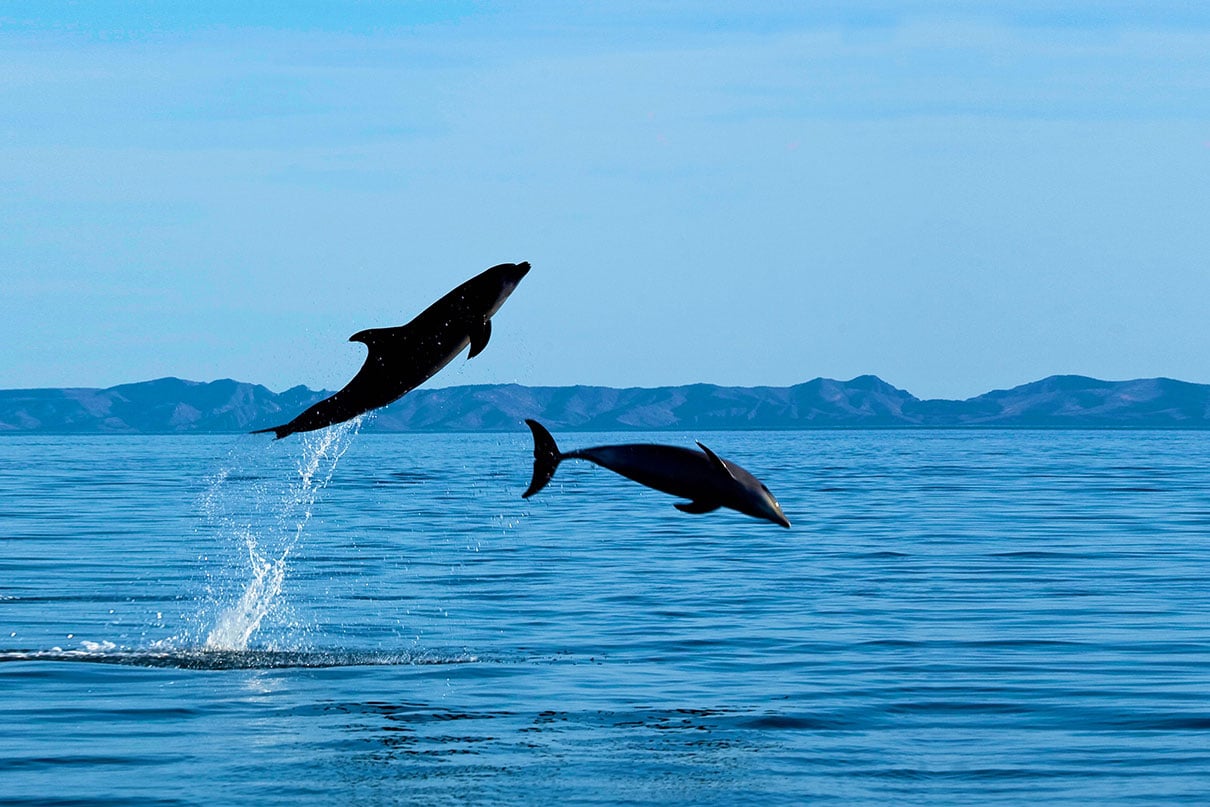
Whale watching trips in Baja California Sur
To make the most of your time in Baja California Sur—and maximize your chances of seeing a variety of marine species, including whales—Grubb recommends combining a multi-day kayaking trip to the Gulf of California with a whale-watching tour on the peninsula’s Pacific side.
Here are a selection of tour operators in the region.
Sea Kayak Adventures
Sea Kayak Adventures’ most popular Baja wildlife tour starts at its beach camp, situated next to the gray whale calving grounds of Magdalena Bay. After three days of whale watching in a small skiff and interacting with “friendlies,” you’ll then head across the peninsula to Loreto. There, you’ll be led by a naturalist kayaking guide through the waters or Loreto Bay National Marine Park, where you’ll camp on remote islands. Or, for something entirely different, you can choose to combine your whale-watching experience with kayaking on the Pacific Ocean side.
Sea Kayak Baja Mexico
At the intersection of the cold California Current coming from Alaska, and the warm Equatorial Countercurrent sits Magdalena Bay, where the mixing waters create an upwelling of nutrients that support an astonishing level of biodiversity. Sea Kayak Baja Mexico offers a 10-day motor-supported kayak tour traversing the coast of one of the world’s richest estuaries. On resupply day, take a boat ride to the protected area of the lagoon to witness the gray whales that have migrated thousands of miles here.
To learn more about whale watching and kayaking along the Baja California peninsula, head to Visit Baja Sur.


